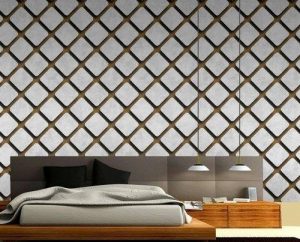The power of color should never be underestimated when it comes to the choice of interior paint color. Distinctive tones and undertones can turn one room into a lively living space while turning another into a relaxation zone.
Painting your interiors every now and then is like a secret weapon that gives your space a new look and feel. Not only does the choice of colour represent the owner’s identity, but it can also be used to visually define space and create focal points especially in today’s open-spaced homes.
When deciding to paint your interiors, you should know exactly what paint colour to choose and where exactly it should be applied. Here are our top 3 tips that can help you make the decision.
Match Interior Paint Color to Feeling
The first aspect you should bear in mind before painting a room is the mood you want to establish in it. Different colours evoke different psychological and emotional responses.
For example, cool colours such as the white, beige, light blue, and green represent calmness and restfulness, therefore, they make a perfect choice for private rooms including bedrooms and bathrooms. On the other hand, warm colours such as red, orange and yellow are more energizing, making them a sensible option to enliven social spaces such as the living room, dining area, and kitchen.
If you want to dig deeper into the correlation of colours to psychology, you will be intrigued by some interesting facts that you might have never been aware of. An example would be the effect red colour has on increasing the appetite, and that explains its use in a lot of fast-food chain restaurants. Accordingly, you might want to refrain from using it in your dining space and kitchen. Studies have also shown the effect of orange in raising athletic performance and endurance; great for your home gym. Yellow is a brain stimulant; making it a perfect colour choice for the kid’s homework room but not a bedroom for example.
We, human beings, are more relaxed whenever we are surrounded by earthy and nature-like colours. Certain shades of blues and greens are soothing specially when combined with earthy tones such as light brown and beige.
Know Your Tones

Not all whites are pure, not all white tones are the same. “Pure” white is the one that is formulated without the use of any tinted undertones. However, white also comes in a massive spectrum according to the undertones used.
Warm white – is when white is mixed with yellow, pink, brown or rust undertones.
Cool white – is when white is mixed with green, blue or grey undertones.
Having distinguished the difference between warm and cool white, let us now distinguish the application of both. Cool whites are often used to open up a space, while warm white is best applied in rooms without a lot of natural light or to make a large room look cosier. As for pure white, it is often used to paint the ceilings in order to create a neutral overhead.
White here is just an example. The same applies for most other colours, their tones and undertones.
Explore Combining 2 or More Interior Paint Colors
Who said a room should just be painted in one color only? A bold and a more stylish approach would be using two different colors in the same room especially in architectural elements or when wanting to create an architectural emphasis where one does not even exist. For instance, white and off-white have been the usual way to go for moulding, windows and doors.
Panelling, or wainscoting is an eye catchy addition that you might want to add to your room. You can always draw attention to a bright wall by adding a white wainscot beneath it, and vice-versa. Also, you can use paint to create the effect of a wainscot even though it doesn’t exist by painting the lowest third of the room in one colour and the upper two thirds in another colour.
Furthermore, when a room is featureless, using two colours can add a bit of edge to it. Adding a bright accent wall provides a contemporary touch to a room where all other walls are on the lighter scheme of colours. Having said that, it is worth noting that accent walls are not necessarily dramatic; a lot of people aim to have an accent wall that is just three tones darker than the rest of the room.
No matter what colors you end up choosing, hiring an expert painter with a solid understanding of the effect different tones and undertones create, and how each can be used to maximize space and ameliorate your surroundings, will guarantee that task is done with maximum professionalism. Through the WeServe App, you can request nearby professional painters in just a matter of a few taps for your interior paint color. Get started on your home’s new look through the WeServe App today!





